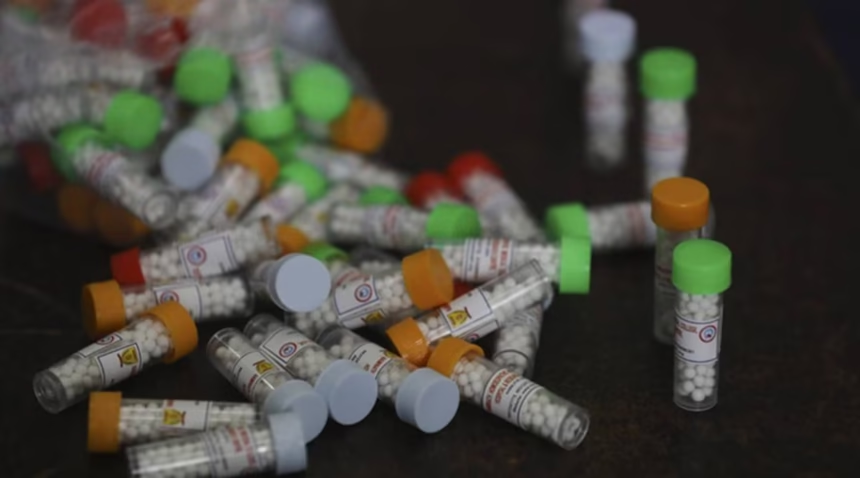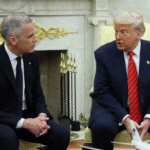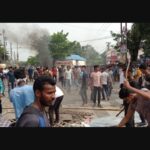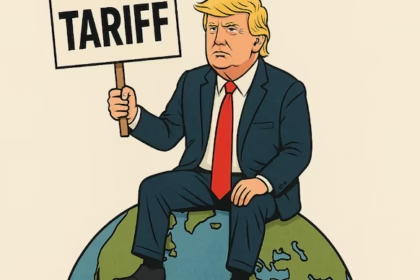Medical Divide in Mumbai — Inside the Homeopath-Allopath Standoff and the CM’s Timely Intervention
A City in Medical Turmoil
Mumbai, a city often admired for its state-of-the-art hospitals, public health resilience, and legacy of medical pioneers, suddenly found itself in the middle of a publicly ignited professional standoff. The flashpoint? A series of controversial decisions, statements, and structural inequities that led to rising tensions between homeopathic and allopathic practitioners across Maharashtra.
Though simmering for years, the conflict reached a tipping point in July 2025, triggering street-level protests, fiery social media debates, and fears of disruption in healthcare services across government hospitals and private clinics alike.
What Sparked the Showdown?
The Root of the Conflict
The conflict was catalyzed by a state directive that proposed certain administrative and financial parity benefits for homeopathic doctors working in the public health system — including:
- Pay scale adjustments
- Expanded supervisory roles
- Joint practice permissions in select integrative health centres
To many allopathic doctors (MBBS/MDs), these proposals seemed not only professionally inappropriate but also medically irresponsible, raising concerns about standard of care, clinical jurisdiction, and scientific validation.
Statements That Fueled the Fire
A few provocative public comments from medical association representatives — some referring to traditional systems as “pseudo-scientific” and “harmful in critical care” — were met with equal fervor from homeopathy advocates, who countered with accusations of elitism and systemic marginalization.
The media picked it up. Twitter/X exploded. Protest calls followed.
The Protests Begin
Allopaths Take to the Streets
By mid-week, a coalition of resident doctors, medical interns, and practicing physicians launched symbolic walkouts from hospitals in Mumbai, Pune, and Nagpur. The Maharashtra Association of Resident Doctors (MARD) issued a public letter warning the government against any “unscientific fusion of clinical responsibilities.”
“Homeopathy and allopathy have fundamentally different diagnostic models. Merging roles compromises patient safety,” said Dr. Sameer Jagtap, a senior physician at JJ Hospital.
Homeopaths Respond
The Maharashtra Council of Homeopathy Practitioners hit back, organizing press meets and issuing counter-statements:
“We treat millions of patients every year, especially in rural and underfunded urban clinics. Dismissing our role in public health is regressive and discriminatory,” stated Dr. Reema Shirke, head of the council’s Mumbai chapter.
Public Reaction and Political Tension
Citizens Caught in Confusion
For the average Mumbaikar, the medical standoff created more confusion than clarity. Many patients, especially those in government hospitals, found themselves caught between delayed appointments, half-staffed wards, and a lack of unified communication on available services.
“I came for a follow-up at Sion Hospital but was told the doctor is protesting. They asked me to come after three days,” said an elderly patient, Mr. Naik, in frustration.
Politicians Get Involved
With rising media pressure and healthcare services beginning to stagger under protest momentum, Chief Minister Eknath Shinde was compelled to act. His office issued a brief but urgent statement:
“The government will mediate between both medical systems to ensure harmony and uninterrupted public health services.”
This opened the door for direct talks between health department officials, homeopathy and allopathy representatives, and neutral mediators.
CM Shinde Steps In — Behind the Closed-Door Talks
An Unofficial ‘Emergency Room’ in Mantralaya
According to inside sources, the Chief Minister personally chaired the first negotiation round at Mantralaya with a clear message: the standoff must end — not by favoring one group over another, but by balancing medical ethics with administrative policy.
Shinde emphasized:
- No parallel medical hierarchy would be allowed.
- Science-based medical practice would remain non-negotiable.
- Homeopaths would be given respect and inclusion, not overreach.
An Interim Formula
After 48 hours of deliberation, a tentative agreement was announced:
- Homeopaths would not be assigned supervisory duties in mixed-clinical settings.
- They would be allowed greater administrative scope in AYUSH-run clinics.
- A formal inter-disciplinary council would be set up to review integration zones — ensuring clear boundaries on patient responsibility, training, and emergency care.
This de-escalated tensions overnight.
A Breather, But Not a Resolution
While hospitals resumed full staffing, and protest banners came down, both communities made it clear: this is only a pause, not a full peace.
“We welcome the CM’s balanced approach, but we will keep watching the implementation,” said MARD in a follow-up release.
India’s healthcare framework is unique. Unlike most countries where modern medicine (allopathy) dominates, India constitutionally recognizes multiple medical systems under the umbrella of AYUSH — Ayurveda, Yoga, Unani, Siddha, and Homeopathy.
British Roots, Indian Foundations
- Allopathy came to India via the British colonial administration, which established medical colleges and hospitals by the mid-1800s.
- Simultaneously, systems like Ayurveda and Unani — rooted in Indian and Greco-Arabic traditions — continued as people’s medicine, especially in rural and indigenous communities.
- Homeopathy, introduced later by German missionaries and Indian reformers like Mahatma Gandhi, found widespread acceptance due to its low cost, perceived gentleness, and community faith.
Post-Independence Policy and the Rise of AYUSH
State Recognition and Institutional Push
- In 1971, the Indian government formally began recognizing homeopathy and other traditional systems through structured councils.
- By the 2000s, AYUSH was institutionalized as a dedicated ministry, with its own universities, medical colleges, and civil service cadre.
This gave homeopathy legal standing, but not parity in clinical authority with allopathy — a key point in the present conflict.
The Politics of Promotion
Many state governments, especially in Maharashtra, Gujarat, and West Bengal, began promoting AYUSH doctors in rural areas, often due to:
- Shortage of MBBS graduates willing to serve in underdeveloped blocks.
- Cost-efficiency in salary and infrastructure.
- Public preference for traditional remedies.
But this substitution strategy bred resentment among allopathic professionals, who saw it as a compromise on evidence-based medicine.
Regulation, Training & Scope of Practice
The Uneven Playing Field
| Criteria | Allopathy (MBBS/MD) | Homeopathy (BHMS) |
|---|---|---|
| Study Duration | 5.5 years + internship | 5.5 years + internship |
| Clinical Exposure | Tertiary hospitals | AYUSH-focused clinics |
| Emergency Training | Mandatory | Limited |
| Drug Use | Modern pharmacology | Homeopathic formulations |
| Legal Scope | Full clinical authority | Restricted to own system |
The scope of practice remains a gray area — though homeopaths are legally barred from practicing allopathy, in many states, court orders and administrative shortcuts allow limited practice in public health settings.
The Legal Labyrinth of Cross-Practice
What the Courts Say
- Bombay High Court (2016): Allowed AYUSH doctors to prescribe allopathic emergency drugs in public health centres — under specific training.
- Supreme Court (2019): Observed that “homeopaths cannot claim parity in clinical authority with allopaths.”
- Multiple state notifications since 2020 have blurred these boundaries further, with “bridge courses” and conditional postings.
Patient Voices — Faith, Confusion, and Realities
In this highly polarized debate, patients remain the most affected — and the least heard.
Case 1: Mrs. Patil, 67 – Kandivali
“For my arthritis, homeopathy helped where nothing else did. But when I had chest pain, I didn’t think twice — I ran to a hospital.”
Case 2: Imran Sheikh, 25 – Dharavi
“At the local clinic, the doctor gives both homeopathic and painkiller tablets. I don’t know which one works, I just want relief.”
Such stories reflect the blended, blurry world of India’s grassroots healthcare — where science meets survival.
The Power and Limits of CM-Led Mediation
What Did the CM Actually Do?
Chief Minister Eknath Shinde’s intervention was both political and practical. With protests escalating and health services strained, the government had two goals:
- Prevent escalation into a full medical strike.
- Signal neutrality while quietly retaining control over healthcare staffing policies.
His formula included:
- Freezing controversial policy circulars.
- Creating a high-level committee to review AYUSH integration proposals.
- Publicly acknowledging the contribution of both medical streams.
What Worked — And What Didn’t
Successes:
✅ Immediate withdrawal of protests
✅ Temporary resumption of hospital services
✅ Avoidance of legal escalation
Shortcomings:
❌ No structural policy change
❌ No timeline for committee decisions
❌ Underlying distrust remains unresolved
Media, Messaging, and Perception Management
Media Framing
- Marathi news channels framed the issue around “medical pride and scientific clarity.”
- English dailies focused on “patient rights and institutional breakdown.”
- Social media turned the conflict into a meme war — allopaths were painted as arrogant; homeopaths as outdated.
The CM’s office had to counter misinformation while appealing to a broad electoral base — especially as both homeopaths and doctors form important vote banks in urban and semi-urban Maharashtra.
What Lies Beneath — Economics, Employment & Medical Hierarchies
The Economics of Medical Parallelism
This entire standoff also reveals an economic undercurrent:
- A BHMS doctor in a rural PHC earns ₹40,000–₹50,000/month.
- An MBBS doctor expects ₹80,000–₹1,20,000/month for similar work — and often refuses rural postings.
- States bridge this gap by assigning greater responsibility to AYUSH doctors, leading to the perception of “medical outsourcing.”
This creates resentment in allopathic circles and pressure on homeopaths who are overburdened but under-recognized.
Institutional Bias and the Prestige Divide
While medical education has diversified, public and professional perception still ranks practitioners in a hierarchy:
- MD/MS (Specialists)
- MBBS
- Dental and BAMS (Ayurveda)
- BHMS (Homeopathy)
- ANM/GNM (Nursing)
This system affects:
- Hospital staffing decisions
- Referral protocols
- Media respect and visibility
The CM’s intervention, though politically strategic, did not disrupt this hierarchy — nor did it attempt to.
Can They Coexist? Rethinking India’s Integrated Healthcare Future
Integration or Segregation?
India stands at a crossroad: should it integrate medical systems or respect their separation?
- Integration allows broader access, especially in underserved regions.
- But it risks diluting medical accountability and patient safety if done without clarity.
The World Health Organization (WHO) has praised India for its integrative health model — but emphasized the need for training, legal clarity, and safety standards.
Policy Recommendations (So Far)
Based on learnings from the Mumbai standoff:
- Establish Interdisciplinary Councils in each state with legal backing.
- Define scope of practice clearly for all medical systems.
- Mandate refresher training for cross-functional roles.
- Public awareness campaigns to educate patients on who treats what.
- Legal audits of medical circulars before implementation.
Also Read : Trump Slaps 35% Tariff on Canadian Goods from August 1; Eyes 15–20% Duties on Other Nations







